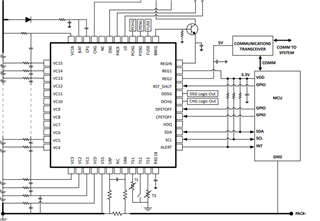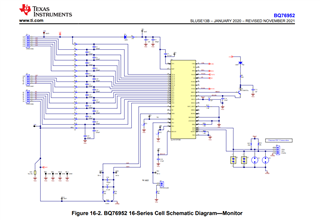Tool/software:
Hi team,
We are interfacing BQ76952 AFE with NXP's S32K144 MCU using I2C interface.
We got the BQ76952 example driver code from the following link:
https://www.ti.com/tool/download/SLUC701.
The example code available only for TI's MSP430 and STM32 micro controllers.
In order to support the S32K144 MCU, we converted the STM32 sample code into NXP code.
We connected the following pins from the AFE to S32K144 MCU:
DFETOFF - GPIO OUTPUT
RST_SHUT - GPIO OUTPUT
ALERT - GPIO INPUT
REG1 - 3.3V
SDA - LPI2C_SDA
SCL - LPI2C_SCL
However, we are not able to read the cell voltages from the AFE.
Please assist me in fixing this problem.
Best regards,
Hareesh




